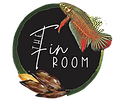Agassiz's Apisto has a wide area of distribution, inhabiting slow-moving, shallow blackwater creeks and tributaries of the Amazon River basin - from the Rio Ucayali basin in Peru, through the Rio Solimões and eastwards to the Rio Capim (a tributary of the Guamá River) in Brazil. In many places the substrate is composed of leaf litter. The home aquarium should contain soft, acidic water and be biologically mature before these fishes are added. Ideally there will be dark substrate and dense planting, with plenty of hiding places/territories amongst rocks, driftwood, coconut shells etc. Floating plant cover could be used to help diffuse the light. Peat filtration and the addition of dried Indian Almond Leaves (Terminalia catappa) would be beneficial to help create the favoured conditions, and be aware that the tank should have a tight fitting cover, as these fish can jump. Filtration should be efficient, but water movement gentle, and frequent partial water changes should be carried out in order to keep nitrate at a minimum. A. agassizii are generally peaceful, but can become rather territorial when breeding. Keep either a single pair, or in larger aquaria, one male with several females (which will form a harem). The females will seek out individual territories, hence the importance of many visual barriers within the tank. Good tankmates include Corydoras catfish, hatchetfish, pencilfish, small tetras, and suckermouth catfish. Like many of the Apistogramma species, A. agassizii will not tolerate an elevated nitrate level. Regular partial water changes are an absolute must for their continued wellbeing. May also be seen on sale as Agassiz's Dwarf Cichlid. Several tank-bred colour forms of this species are available, including 'double red', 'fire red', 'gold', 'red', and 'super red', along with numerous wild variants such as 'Alenquer', 'Cuipeua', 'Santarem', and 'Tefe'.
Feeding
Flake, micropellets, small frozen foods such as bloodworm, white mosquito larvae, vitamin-enriched brineshrimp and daphnia.
Breeding
Successful breeding can be achieved in the home aquarium, although it is moderately difficult. The water should be very soft and acidic, and the temperature raised to the top end of their preferred range. Ideally, each female fish will be provided with a suitable spawning site in the form of a cave or flower pot on its side. Up to 150 eggs will be laid on the ceiling of the cave or pot, and these will be guarded by the female. The male fish will guard the general harem territory. The eggs should hatch after 2 to 4 days, depending on water temperature. The female continues guarding the wrigglers, and after a further few days, will lead the fry out of the cave. She will be very pugnacious at this point, fending off any would-be predators. The fry will require frequent small feeds with appropriately sized foodstuffs at this point, such as baby brineshrimp. If the spawning has occurred in a general community tank, it is a good idea to feed the other fish their food at the opposite end of the aquarium at the same time, to avoid undue stress to the female, who will be desperately trying to guard her young. Sometimes the female will take the fry up in her mouth and move them to another area of the tank.
top of page

The Fin Room
Specialist Trader & Dealer Of Aquaria

Company Reg SC758673
£24.99Price
Out of Stock
Related Products
bottom of page
















